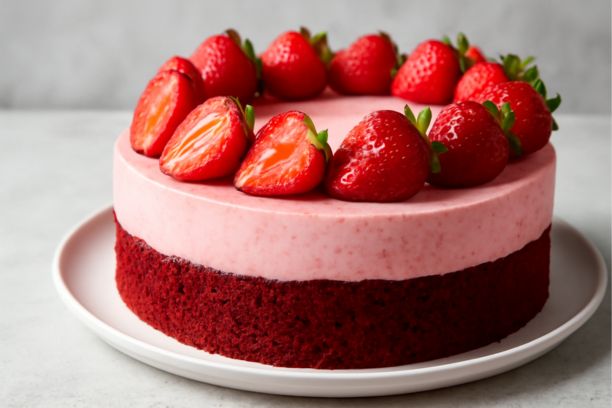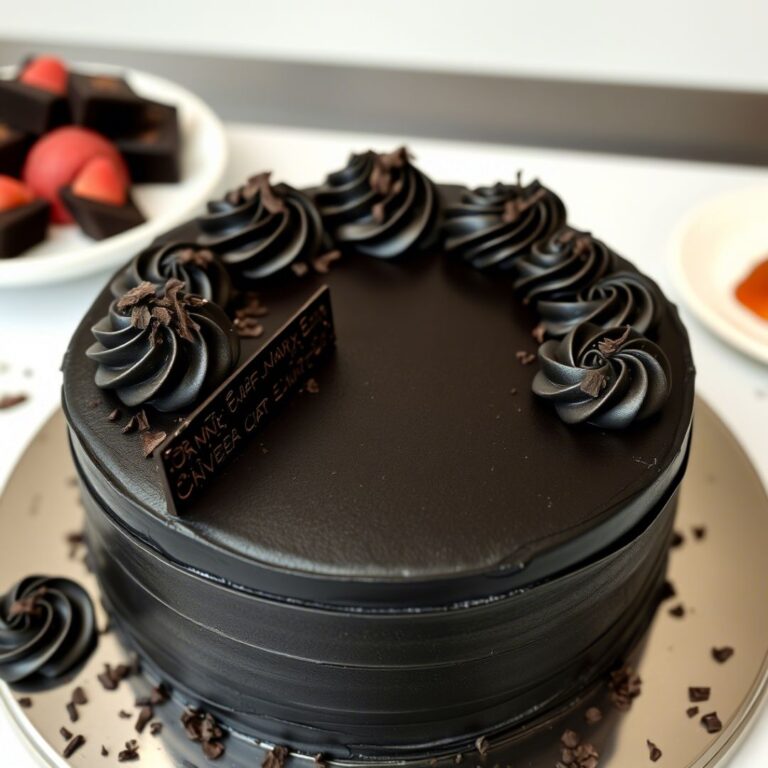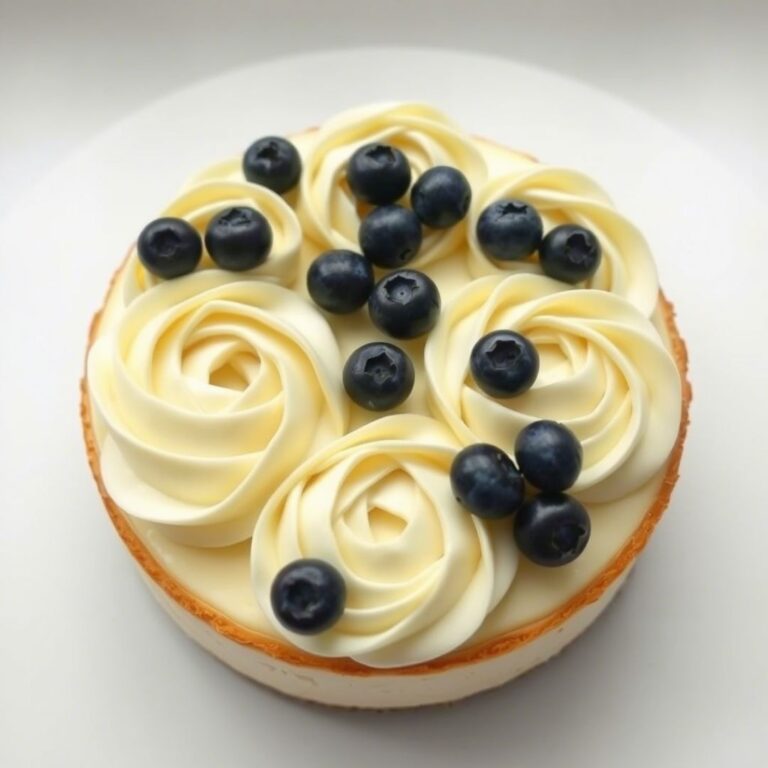Japanese Strawberry Sponge Cake Perfect Delight
When it comes to desserts that are light, fluffy, and irresistibly delicious, Japanese Strawberry Sponge Cake, often called Japanese Strawberry Shortcake, is a standout favorite.
Renowned for its airy texture and balanced sweetness, this cake embodies the subtle elegance of Japanese baking.
Unlike heavier Western cakes, this sponge cake is soft yet resilient, perfectly complemented by fresh strawberries and whipped cream. Whether for festive celebrations or casual teatime treats, this delightful dessert offers a refined taste experience you won’t forget.
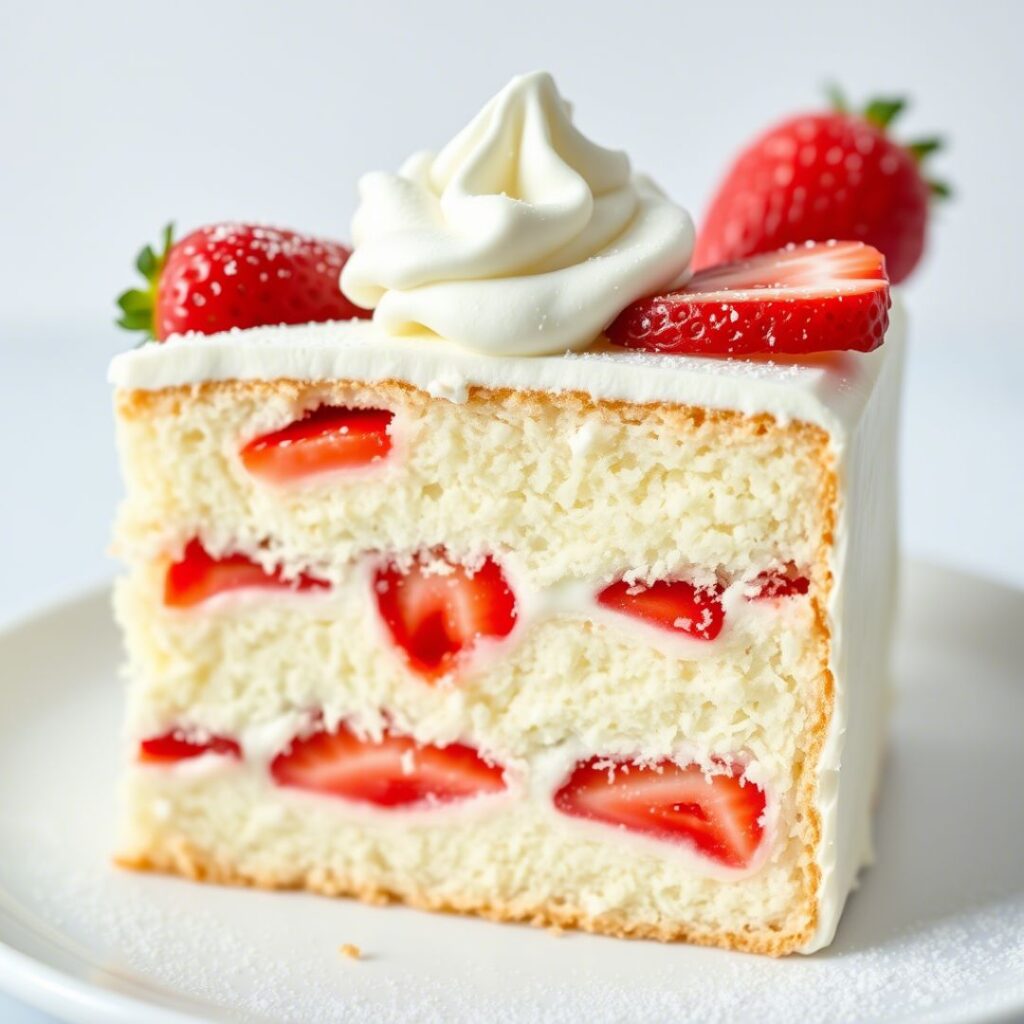
What Makes Japanese Strawberry Sponge Cake So Special?
The charm of Japanese Strawberry Sponge Cake lies in its texture and simplicity. The sponge itself is lighter and softer than typical Western cakes, with a bouncy feel that melts in your mouth.
This unique texture resembles a cotton cheesecake but remains distinctly fluffy. The cake is layered with generous amounts of lightly sweetened whipped cream and fresh strawberries, both inside the cake and on top as a garnish.
In Japan, this cake is a beloved classic, especially during holidays like Christmas, where it’s affectionately known as “Christmas cake.”
The Japanese have adapted the concept of strawberry shortcake, originally a Western biscuit-based dessert, into a softer and creamier version that suits their palate and cultural preferences.
Ingredients: Building Blocks of the Perfect Japanese Strawberry Sponge Cake
The simplicity of the ingredients is what makes this cake approachable yet elegant:
For the Sponge Cake:
- 125g (4.4 oz) all-purpose flour, sifted
- 100g (3.5 oz) granulated sugar
- 4 large eggs (separated into yolks and whites)
- 60g (2.1 oz) unsalted butter, melted
- Butter and flour for preparing the cake pan
For Decoration and Filling:
- Approximately 18 medium-sized fresh strawberries (about 450g / 1 lb)
- 400ml (0.8 pt) heavy cream for whipping
- 10g (0.4 oz) sugar for sweetening the cream
- Optional syrup made with 40ml water and 10g sugar to moisten the sponge layers
Note: The quantities may vary slightly depending on the cake pan size and your desired cream thickness.

Step-by-Step Guide to Baking Japanese Strawberry Sponge Cake
1. Preparing the Cake Pan and Oven
Start by preheating your oven to 180°C (356°F). Grease your cake tin (preferably 18cm or 7 inches in diameter) with butter and dust it lightly with flour to prevent sticking. Shake off excess flour.
2. Making the Sponge Batter
Separate the eggs carefully. Begin by beating the egg yolks with two-thirds of the sugar until the mixture is pale and thick. You should see the batter form a ribbon shape when you lift the whisk — this indicates proper aeration.
In another clean bowl, whip the egg whites. As the whites start to foam and double in volume, add the remaining sugar gradually in 2–3 batches. Continue whipping until stiff peaks form.
Gently fold the sifted flour into the beaten yolks using a spatula, being careful not to deflate the mixture. Next, fold in one-third of the meringue to loosen the batter, then gradually fold in the remaining meringue until well combined.
Finally, pour the melted butter over the batter and fold it in carefully. It’s okay if the butter doesn’t fully incorporate; avoid overmixing to preserve air bubbles.
3. Baking the Sponge Cake
Pour the batter into the prepared pan. Lightly drop the pan onto your work surface to release large air bubbles and even out the batter.
Bake for about 25 minutes. Test doneness by inserting a bamboo skewer in the center — it should come out clean or with a few moist crumbs. If needed, bake for an additional 5 minutes.
Once baked, remove the cake from the oven and drop the pan a few times on the counter to prevent shrinking. Turn the cake upside down onto a wire rack to cool completely. Cooling upside down helps keep the cake flat and prevents collapse.
Preparing the Whipped Cream and Strawberries
While the sponge cools, wash and hull your strawberries. Halve 10 strawberries for the cake filling and reserve some whole for decoration.
Whip the heavy cream with sugar until soft peaks form. Be careful not to overwhip — the cream should be smooth and slightly firm but not grainy.
Optionally, prepare a simple syrup by boiling water and sugar together, then cooling. Brush this syrup lightly onto the sponge layers after slicing to keep them moist.
Assembling the Japanese Strawberry Shortcake
1. Slice the Sponge Cake Horizontally
Use a serrated knife to slice the cooled sponge cake into two even layers. A helpful tip is to make a shallow cut all around first, then slowly slice deeper to ensure an even cut.
2. Add Syrup and Cream
Brush the cut sides of the sponge with the syrup to retain moisture.
Spread a thick layer of whipped cream on the bottom sponge layer, covering the surface evenly.
Arrange the halved strawberries closely on top of the cream layer, filling every gap.
Add another layer of whipped cream over the strawberries, smoothing the surface.
3. Finish with the Top Layer
Place the second sponge layer gently on top, syrup side down. Press lightly to secure the layers.
Coat the entire cake (top and sides) with the remaining whipped cream. For a polished look, chill the cake for 10 minutes before applying a final smooth layer of cream.

4. Decorate the Cake
Pipe small mounds of cream around the top edge and place whole strawberries on each mound for a beautiful finishing touch. Feel free to get creative with decorations — the cake is as much about visual appeal as flavor.
Tips for Achieving a Fluffy and Light Japanese Sponge Cake
- Use fresh eggs: Fresh eggs create finer air bubbles for a soft sponge.
- Keep bowls and utensils clean and dry: Even traces of oil can prevent egg whites from whipping properly.
- Separate eggs carefully: Avoid any yolk contamination in the whites to ensure firm meringue.
- Fold gently: Overmixing deflates the batter and leads to a dense cake.
- Whip cream correctly: Stop when soft peaks form to avoid grainy texture.
- Cool cake upside down: This prevents shrinkage and keeps the top flat for easier decoration.
Variations and Customizations
While strawberries are classic, you can customize this Japanese sponge cake in many ways:
- Mixed Berry Shortcake: Use raspberries, blueberries, or blackberries instead of strawberries.
- Peach Shortcake: Substitute peaches for a summery twist.
- Tropical Shortcake: Incorporate kiwi, pineapple, and mango for vibrant flavors.
- Add a hint of liquor: A small amount of liqueur in the cream or syrup can add sophistication.
Cultural Significance: Japanese Strawberry Shortcake and Christmas
In Japan, Japanese Strawberry Sponge Cake has become synonymous with Christmas celebrations. Introduced in the early 20th century by the Fujiya confectionery company, this cake was marketed as a “Christmas cake,” a tradition still cherished today.
Unlike Western Christmas gatherings, Japanese families often do not hold religious ceremonies during the holiday. Instead, the Strawberry Shortcake is a symbol of joyful festivity, enjoyed by families and friends. It’s common to see these cakes sold in department stores and specialty shops during the holiday season, sliced and ready for gifting or sharing.
Storage and Shelf Life
To preserve the freshness and delicate texture of your Japanese Strawberry Sponge Cake, store it in the refrigerator, covered loosely with plastic wrap or in a cake box. It’s best consumed within two days, as the strawberries and cream can lose their freshness by the third day.
For optimal taste and texture, avoid freezing this cake because the whipped cream and fresh fruits may not hold up well after thawing.
Nutritional Snapshot
A typical serving (about 146g) of Japanese Strawberry Sponge Cake contains approximately:
- Calories: 346 kcal
- Fat: 22g (including 13g saturated fat)
- Cholesterol: 152mg
- Carbohydrates: 31g (with 18g sugar)
- Protein: 6.2g
- Vitamin C: 40% of daily recommended intake
This nutritional profile makes it a delightful yet moderate indulgence, ideal for those who enjoy balanced flavors without overwhelming sweetness.
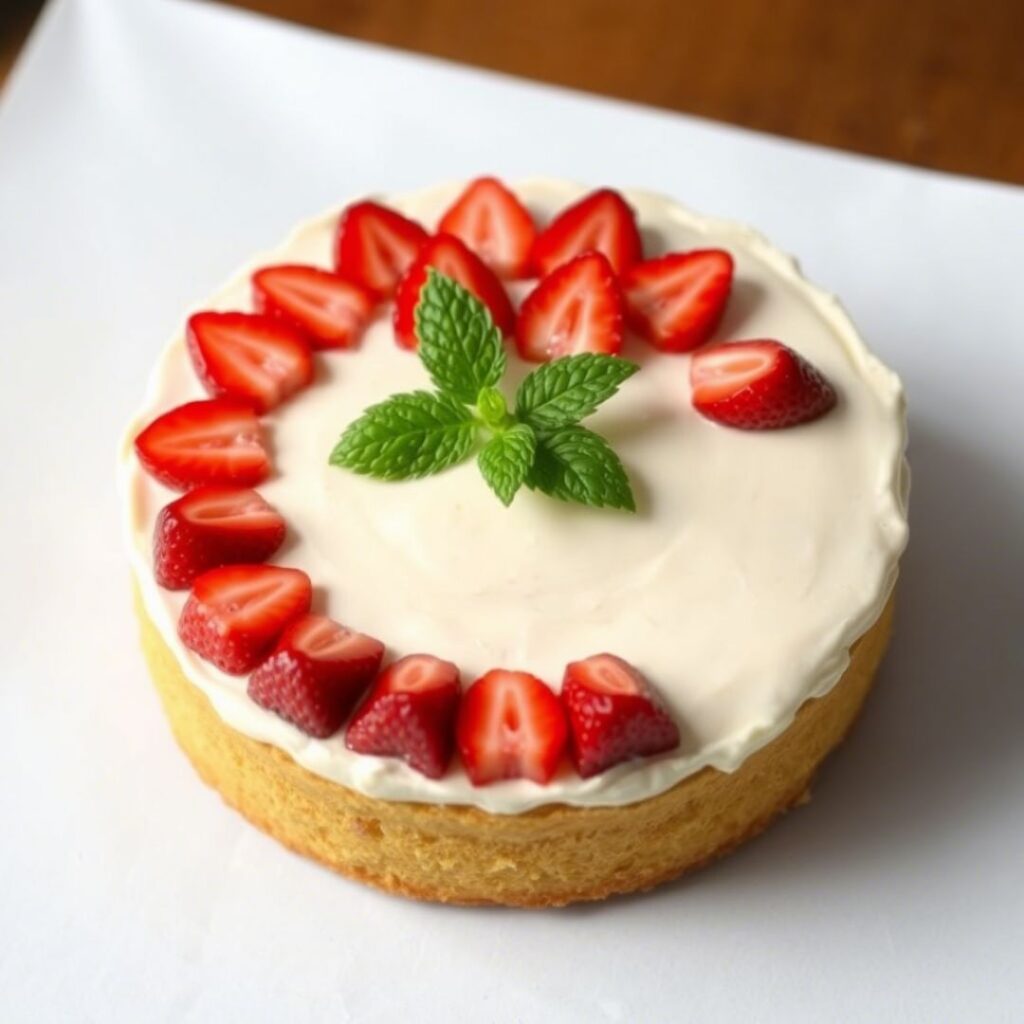
Frequently Asked Questions (FAQs)
Q1: Can I skip separating eggs and beat them whole?
Yes, you can beat whole eggs over a warm water bath until thick and pale, then fold in the flour and butter. This method yields a slightly different texture but works well for beginners.
Q2: What if my sponge cake collapses or is too dense?
This usually results from overmixing or old eggs. Ensure gentle folding and fresh ingredients.
Q3: Can I use frozen strawberries?
Fresh strawberries are preferred for texture and flavor, but thawed frozen berries can work in a pinch.
Q4: How long can I store the cake?
Consume within 2 days for best freshness.
Q5: Is it okay if my whipped cream is too stiff?
Overwhipped cream can become grainy and hard to spread. Aim for soft peaks for a smooth finish.
Final Thoughts
The Japanese Strawberry Sponge Cake is a testament to the art of subtlety and balance in baking. Its delicate crumb, paired with lightly sweetened cream and fresh strawberries, creates a harmonious dessert that delights without overwhelming the senses.
Whether you’re a seasoned baker or trying this recipe for the first time, the satisfaction of crafting and enjoying this classic cake is unmatched. From festive celebrations to simple moments of indulgence, this cake captures the essence of joy in every bite.
Embrace the process, savor the flavors, and share this beautiful cake with loved ones — it’s more than just dessert; it’s an experience.


